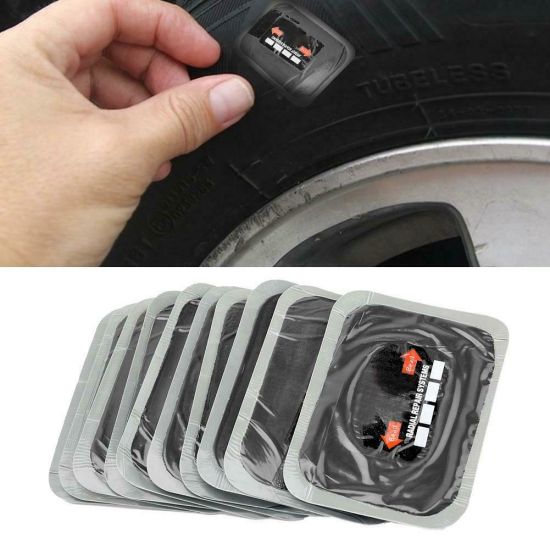So, you have a flat tire or one that’s leaking air. It’s not the end of the world. Luckily there are safe and cost-effective ways to properly repair most tire punctures. The purpose of this article is to show you the difference between a safe, permanent repair and a temporary string, plug or patch repair.
According to the National Highway Traffic Safety Administration (NHSTA) and the Tire Industry Association (TIA), the only method to properly repair a tire puncture is to fill the injury with a repair stem and back the stem with a repair patch. This is commonly known as a combination repair or a patch/plug repair.
Patch/plug repairs are most often performed using a one-piece repair unit that combines the repair stem and cap (or patch) into one unit. However, special circumstances may require the use of a two-piece combination repair (ex. If the angle of the puncture exceeds 35 degrees). The repair is then permanently bonded to the inside of tire and through the injury channel using a cold, chemical vulcanizing process.
The repair essentially becomes part of the tire, creating an air-tight seal that keeps air in and moisture and contaminants out (more on this procedure below).
Emergency roadside plug repairs are NOT intended to be a permanent tire repair. Plugs and string repairs are designed to get you back up and rolling long enough to get home or to the nearest service center to perform a proper tire repair.
The common misconception with plug and string repairs is that because they hold air, they are safe to use. While it is true that many plug repairs do a great job of keeping air in the tire, that’s only part of the equation. Because they’re not completely sealing the injury, plug repairs may allow air and moisture to penetrate the body of the tire. Over time, this could lead to a dangerous (or even deadly) blowout.
A Patch-Only Tire Repair Leaves Your Tire Susceptible to DamageA tire repair that uses only a patch is also NOT considered proper or safe.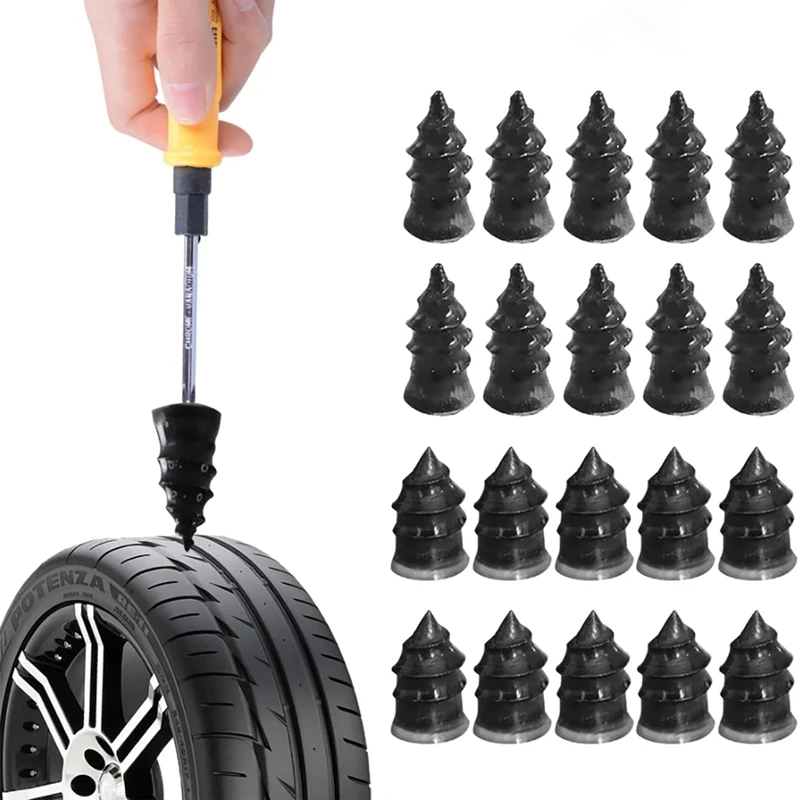 A properly installed patch will do a great job of allowing the tire to hold air. However, similarly to the plug-only repair, the patch does not fill the injury channel. Therefore, air and moisture could seep into the tire from the tread surface and eventually damage the tire.
A properly installed patch will do a great job of allowing the tire to hold air. However, similarly to the plug-only repair, the patch does not fill the injury channel. Therefore, air and moisture could seep into the tire from the tread surface and eventually damage the tire.
Only a proper patch/plug repair completely seals the puncture from inside the tire and through the entire injury channel. There are a few extra steps necessary to perform a proper tire repair in accordance with industry guidelines. We’ve developed a simple acronym to help organize and remember the steps: R.E.P.A.I.R.
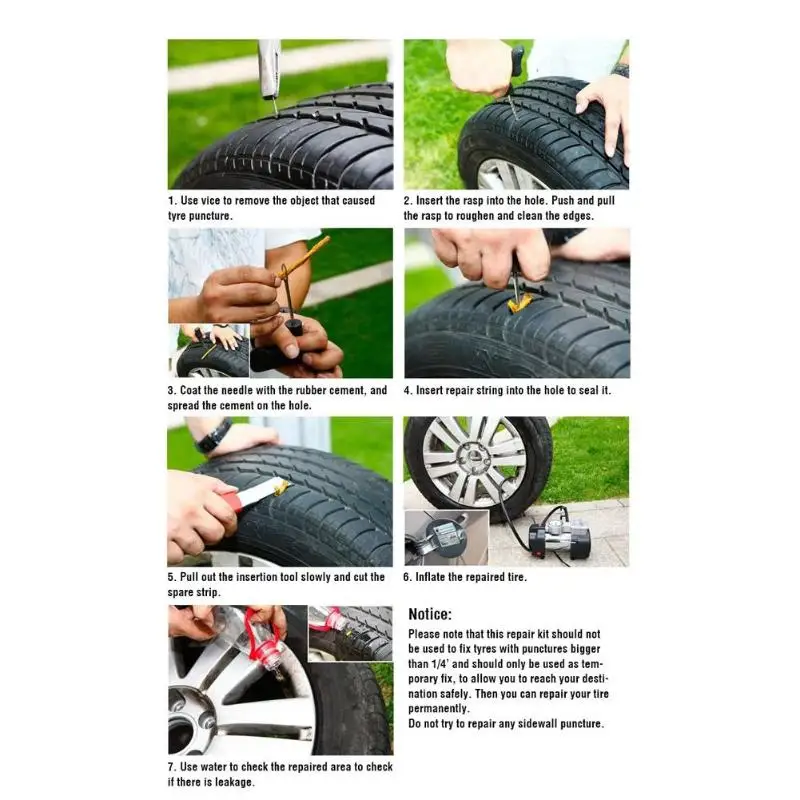 It can also be determined if the puncture did any significant damage to the cords or belts.
It can also be determined if the puncture did any significant damage to the cords or belts.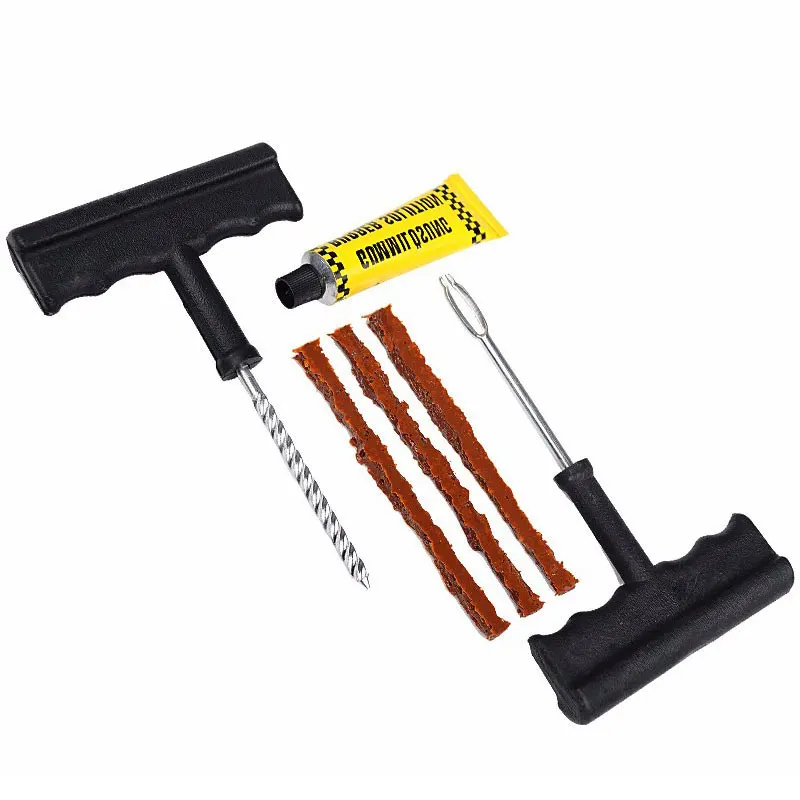 The over-buffed area of the inner liner is treated with a thin layer of rubber sealant, and the excess repair is trimmed to approximately ¼” above the tread surface.
The over-buffed area of the inner liner is treated with a thin layer of rubber sealant, and the excess repair is trimmed to approximately ¼” above the tread surface.There are a number of factors that may determine whether or not your tire is safe to repair. These factors fall into three main categories:
 Excessive wear, casing separation, impact damage and other conditions may make it unsafe to properly repair your tire. For a more comprehensive list of repairable vs. non-repairable conditions visit our blog Can Your Tire Be Repaired?
Excessive wear, casing separation, impact damage and other conditions may make it unsafe to properly repair your tire. For a more comprehensive list of repairable vs. non-repairable conditions visit our blog Can Your Tire Be Repaired?The occasional flat or leaky tire is an unavoidable part of life. But, taking shortcuts to repair it can be dangerous to you and your passengers. Take the time and do the research to do the job right and/or find a reputable tire repair shop trained in proper tire repair procedure.
Brian England, Tue, Feb 21, 2017
Need an automobile tire repaired? Know what’s acceptable when it comes to repairing your tires. Not all tire punctures are created equal; some can be repaired, and some can’t. Car tires that are improperly repaired can fail and result in an accident. For example, this photo shows an example of a repair that should never have been done.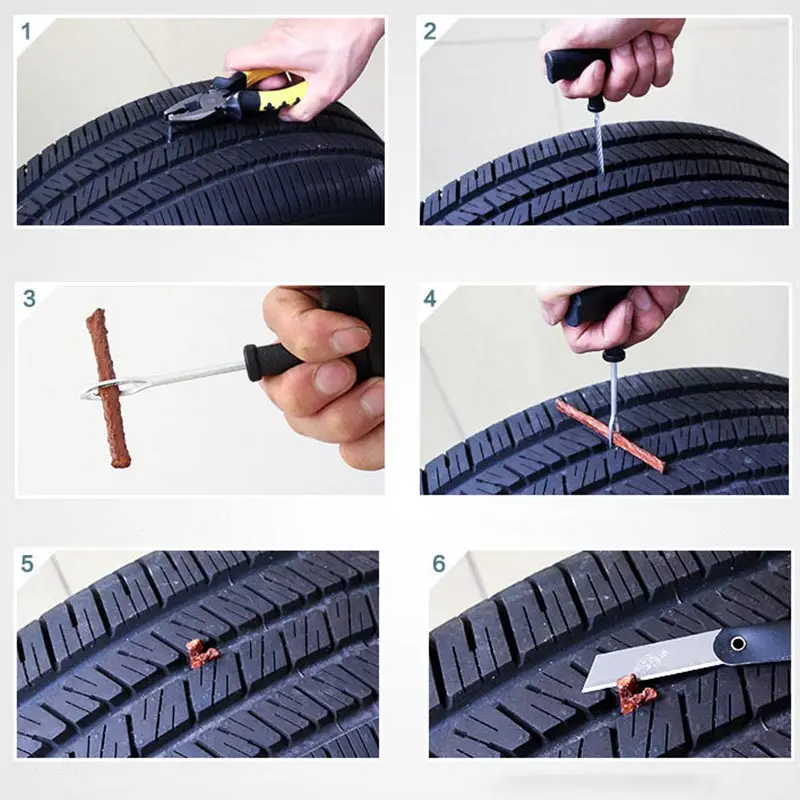
What is an acceptable tire repair? Here are some guidelines.
1. Only repair punctures that fall within the tread area. First of all, you need to take a look at where the puncture area is. Repairs should be limited to the tread area only. If a repair is beyond the tread area (see the photo below) on the side or along the edge like in the above photo, then the tire should be replaced. Do not make or allow a repair. A reputable tire repair shop would not agree to perform an unsafe repair.
2. Replace tires with punctures greater than 1/4″ in diameter. When it comes to tire punctures, size is important. If the damage resulting from a tire puncture is bigger than 1/4 inch in diameter, it is not safe to complete the repair.
3. Don’t get a tire repaired if the treads are less than 1/16 inch or if it is badly damaged. There’s no sense in repairing a tire that shouldn’t be on the road in the first place.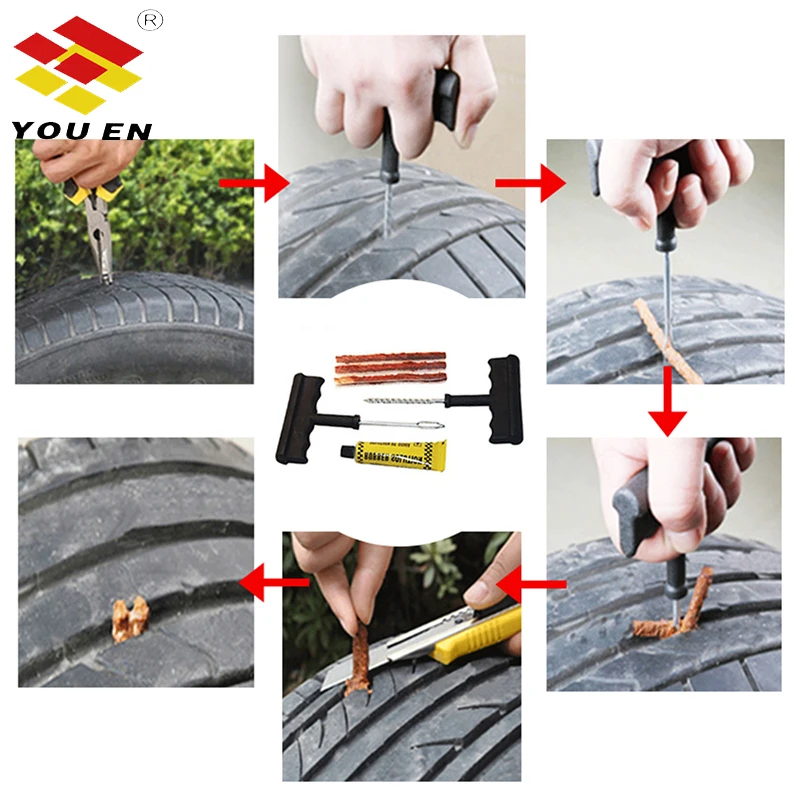 If the treads are less than 1/16 inch, then the tire isn’t safe for road use; it’s time for a replacement. But, there are other times when a replacement is called for. We posted this photo on Facebook recently showing a tire where the tread depth is okay, but the tire is badly damaged. The orange circle shows the small cracks caused by dry rot. The pink circle shows where chunks of the tire tread are missing. If your tire has either one of these problems, replace it versus repairing it.
If the treads are less than 1/16 inch, then the tire isn’t safe for road use; it’s time for a replacement. But, there are other times when a replacement is called for. We posted this photo on Facebook recently showing a tire where the tread depth is okay, but the tire is badly damaged. The orange circle shows the small cracks caused by dry rot. The pink circle shows where chunks of the tire tread are missing. If your tire has either one of these problems, replace it versus repairing it.
4. Make sure that the professional repairing your damaged automobile tire removes the tire from the rim in order to fully inspect the damaged area. The inner liner may have sustained damage that is not visible from the outside.
5. Ensure that your tire is repaired properly with a patch and plug assembly. A plug alone is not an acceptable repair. The photo below shows the type of patch/plug assembly that should be used (on the right) versus one that should not (a plug only on the left).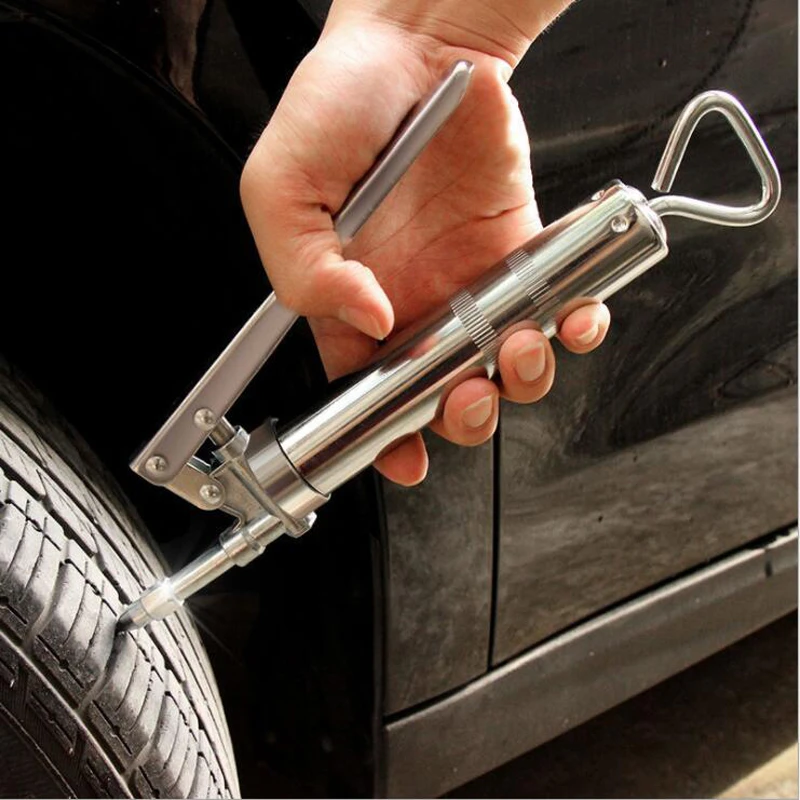
6. Don’t overlap repairs. If a new puncture is in the same place as an existing repair, then the tire should be replaced. Don’t have it repaired.
Depending on the type of tire you have, there may be some other limitations or restrictions on repairs. Be sure to take your damaged tire to a professional for repair or replacement. For more information on safely repairing tires, check out the Rubber Manufacturers Association website at www.betiresmart.org or stop by BA Auto Care. We’ll take a look at your tire, and let you know if you have an unsafe repair.
Note: This article, originally published back in 2012, has been updated.
02/22/2018
Despite the objective importance of the spare tire, not all drivers always have it with them. Some do not carry a spare tire out of hope or belief that their tires are invulnerable.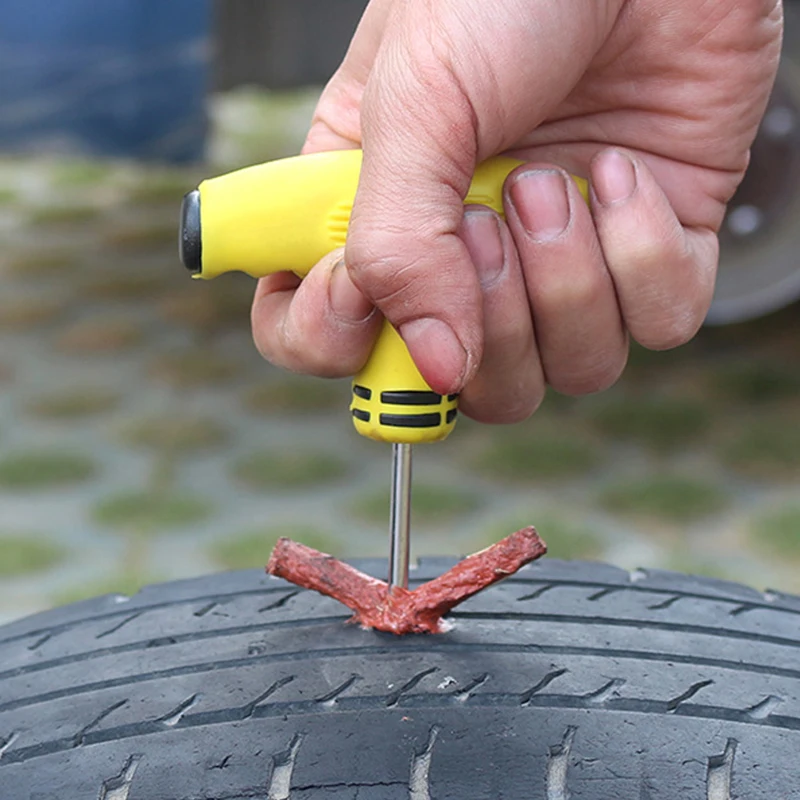 Others deliberately take this step, as they stocked up with a special tool in advance, which, if necessary, can eliminate a tire puncture along the way. What else can be used and how to do it right? Let's figure it out.
Others deliberately take this step, as they stocked up with a special tool in advance, which, if necessary, can eliminate a tire puncture along the way. What else can be used and how to do it right? Let's figure it out.
Contents of :
Conventionally, all methods for express tire repair can be divided into two categories:
Consider ways to restore a damaged tire on the road. The first three methods are temporary. The latter, with the right approach, allows you to completely restore the tire.
 While driving, it is inside the wheel in liquid form. If the tire suddenly loses its tightness, then this composition, leaving together with the air, clogs the slot in a few seconds. This method is relevant if you have a long trip under time constraints.
While driving, it is inside the wheel in liquid form. If the tire suddenly loses its tightness, then this composition, leaving together with the air, clogs the slot in a few seconds. This method is relevant if you have a long trip under time constraints.
 The old grandfather method is applicable if the puncture has a small diameter, and there is no foreign object left in the tire body. A simple screw or self-tapping screw (preferably larger in diameter than the size of the puncture) is taken and screwed into a hole on the surface of the tire. The self-tapping screw can be borrowed from the fender liner or plastic interior elements. This method will not eliminate the air leak, but will allow the car owner (perhaps with several swaps) to get to the nearest tire service.
The old grandfather method is applicable if the puncture has a small diameter, and there is no foreign object left in the tire body. A simple screw or self-tapping screw (preferably larger in diameter than the size of the puncture) is taken and screwed into a hole on the surface of the tire. The self-tapping screw can be borrowed from the fender liner or plastic interior elements. This method will not eliminate the air leak, but will allow the car owner (perhaps with several swaps) to get to the nearest tire service. After removing the foreign object, the hole is processed with an awl with abrasive edges: this tool must be inserted into the puncture and cleaned and worked out several times with intense reciprocating movements.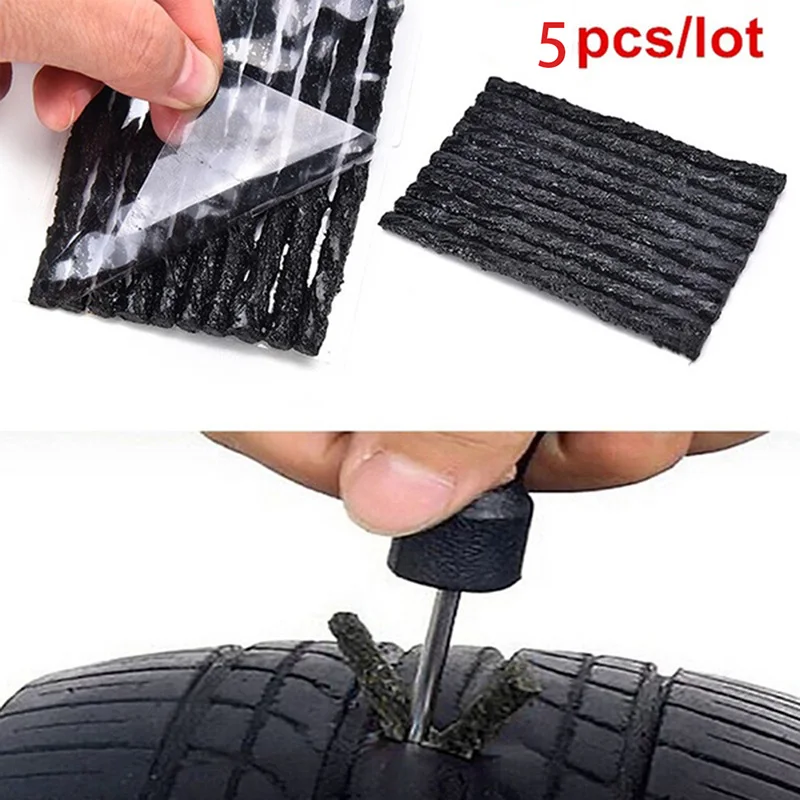 Then the raw rubber tow is removed from the package and inserted into the eye of the second awl so that both ends are the same length. The hole in the tire and the raw rubber is treated with an activator. Next, the awl is inserted into the puncture in such a way that small ends of the tourniquet, about a centimeter long, remain outside. After 5 minutes, the excess remaining on the surface is cut off. This method can also successfully eliminate small side cuts.
Then the raw rubber tow is removed from the package and inserted into the eye of the second awl so that both ends are the same length. The hole in the tire and the raw rubber is treated with an activator. Next, the awl is inserted into the puncture in such a way that small ends of the tourniquet, about a centimeter long, remain outside. After 5 minutes, the excess remaining on the surface is cut off. This method can also successfully eliminate small side cuts.
There is a technique that allows using wire and several bundles of raw rubber to get rid of even extensive side damage to tires. However, it is quite difficult to implement and not every driver will be able to implement it.
Consider a few well-known tools that are most widely used to repair punctures:
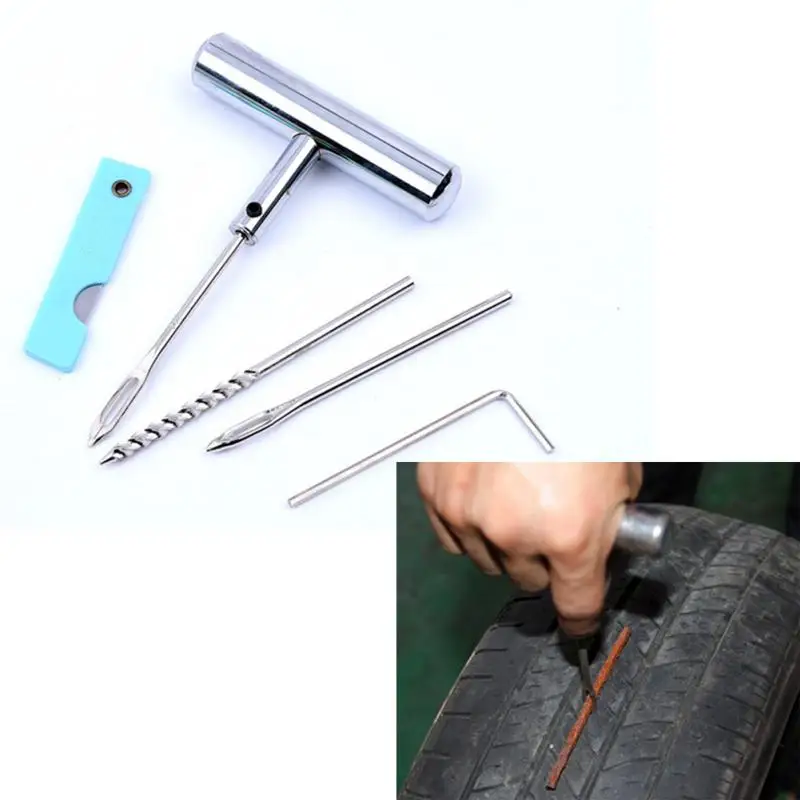 It works in the same way as most sealants: the container is thoroughly shaken, after that a hose is attached, and the contents from the container are completely pumped into the tire. The maximum diameter of the repaired hole is 4.5 mm. This is almost always enough to repair punctures caused by nails and screws.
It works in the same way as most sealants: the container is thoroughly shaken, after that a hose is attached, and the contents from the container are completely pumped into the tire. The maximum diameter of the repaired hole is 4.5 mm. This is almost always enough to repair punctures caused by nails and screws.
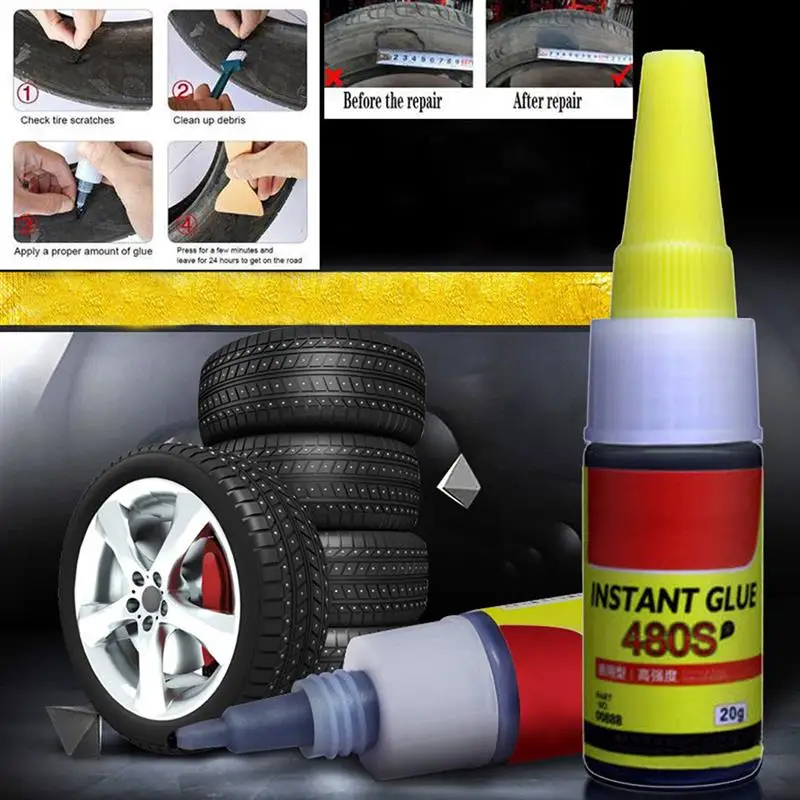
Our online store offers a wide range of tire repair products. You can order them through the TopDetal.ru website or by calling 8 800 444-75-16.
Also read on our website about the best liquid rubbers.
Back to list
We repair tires with a visit from 2000 ₽ and give a lifetime warranty.
The process of repairing a tire with a fungus.
Puncture before repair.
Puncture in the tread area with a diameter of 8 mm. A double repair method was chosen.
Repair process.
Stripping and gluing the patch and stem of the fungus.
Refurbished.
Tire after repair quality test.
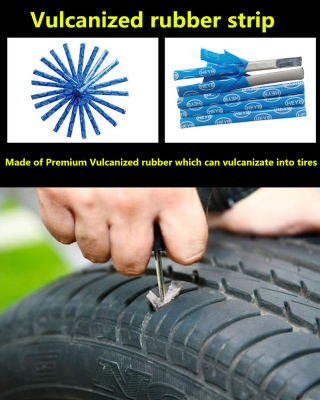
Call now and in 1 minute a mobile tire service will be at your place.
| Call an expert |
There are only three of them: tourniquet, fungus, double method
It is known that the repair of tubeless tires is a rather complex technological process that requires the master not only certain knowledge and skills, but also strict adherence to repair technologies and the sequence of the process itself.
Prokol24 Mobile Tire Service uses exclusively branded materials from the American company TECH, whose products have become the basis for the repair and maintenance of tubeless car tires for a long time.
Puncture repairs are based on the application of cold vulcanization and can be used for retreading as well as tire sidewall repairs. Before starting, the repair technician removes the tire from the rim and checks for other hidden damage.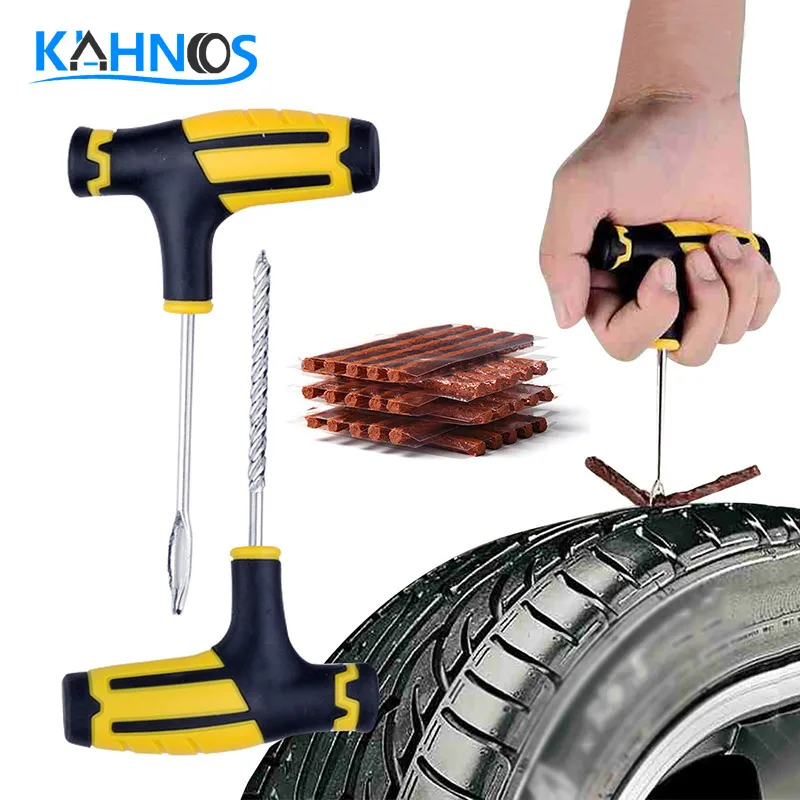
The main stages of repair.
Looking for a puncture site
Spilling the entire tire with a special liquid. When in contact with compressed air, it begins to foam.
Preparing the tourniquet
We put the tourniquet in a special "stinger" and lubricate it with glue.
Making repairs
After removing foreign objects from the tire, insert the tip into the puncture site and press until it hits the stopper. After sharply pull out.
Gray or brown harnesses sold in auto parts stores are not professional repair material. Such a tourniquet can be used if necessary to get to the nearest tire changer. A temporary harness will last a maximum of 5-10 thousand kilometers, so such a tire will not last long.
First of all, a qualified Prokol24 field tire fitter will definitely disassemble the wheel and inspect its inside to make sure there are no foreign objects or damage. After their elimination, we use special professional cord harnesses and glue. At the same time, a professional harness is durable in operation, because its service life corresponds to the service life of the tire itself.
After their elimination, we use special professional cord harnesses and glue. At the same time, a professional harness is durable in operation, because its service life corresponds to the service life of the tire itself.
R 13-17
Full range of works.
from 2500₽
Repair
R 18-19 Full complex of works
R 18-19
from 2500 rubles
Repair
R 20-22
A full range of works.
from 3000₽
Repair
The main stages of repair.
Looking for a puncture site
Spilling the entire tire with a special liquid. when in contact with compressed air, the liquid begins to foam.
Marking the surface
Marking the puncture area and the surface to be processed.
Preparing the surface
We clean the inside of the tire from the stiffeners. We make the necessary surface roughness. Center the hole with a cutter.
Apply glue
Degrease and apply glue to the prepared surface
Install the fungus
Install the fungus and roll it tightly to the surface.
Testing the repair
Checking the quality of the repair and cutting off the stem of the fungus.
This is the main method for tire repair. The fungus itself has two parts - a leg and a hat. The foot fills the puncture site, thereby preventing air and moisture from entering the inside of the tire. The cap of the fungus bears all the loads of repair work. To repair tubeless tires in this way, the life of the retreaded surface is equal to the life of the tire itself.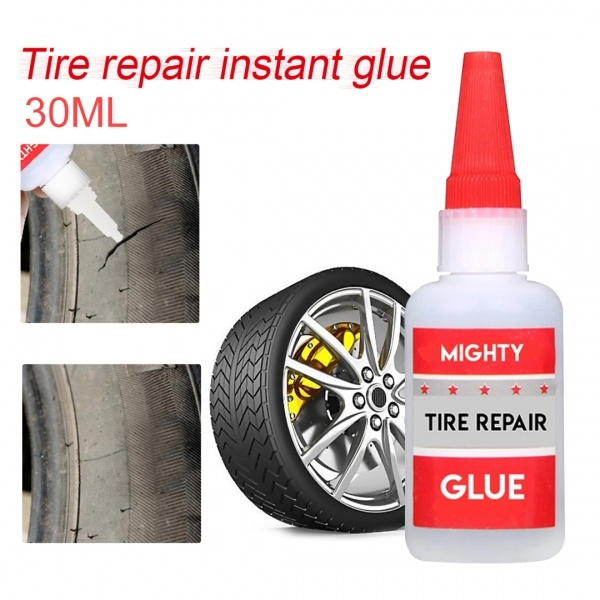
R 13-16
Full range of works.
from 2500₽
from 2500 rubles
Repair
R 19-22
A full set of works.
from 3000₽
Repair
Double method repair.
The main stages of repair.
Looking for a puncture site
Spilling the entire tire with a special liquid. when in contact with compressed air, the liquid begins to foam.
Marking the surface
Marking the puncture area and the surface to be processed.
Centering with a hole
To install the stem of the fungus
Install the stem of the fungus.
Center the hole and install the stem of the fungus.
Preparing the surface.
We clean the inner side of the tire from the stiffeners. We make the necessary surface roughness.
Apply glue.
Degrease and apply glue to the prepared surface.
Installing the patch.
Install and roll the patch tightly.
Testing the repair
Inflating the tire up to 3 Atm. and check the reliability of the repair.
Repair completed.
We give the tire to the client.
At an angle greater than 25 degrees, it is impossible to repair a tubeless tire with a fungus or a tourniquet. In this case, our skilled craftsmen use the double method, which involves the use of a patch and a stem of the fungus. This repair method ensures that the life of the patch will match the life of the tire.
If the diameter of the tire punctures is more than 30 mm, then, unfortunately, the car tire cannot be repaired. In this case, it is necessary to change the tires.
R 13-16
Full range of works.
from 2500₽
Repair
9004 R 10.1 Full complex of worksfrom 2500₽
Repair
R 19-22
Full range of works.
from 3000 rubles
Repair
As for the complete repair of the tire after serious punctures or cuts, it will simply not be done on the road. As experts advise, even if at first glance it seems that it can be patched somehow, it is better not to try to do this. The whole reason is that poor-quality tire repair significantly reduces its reliability, as well as the level of balancing the car while driving, especially at high speed.